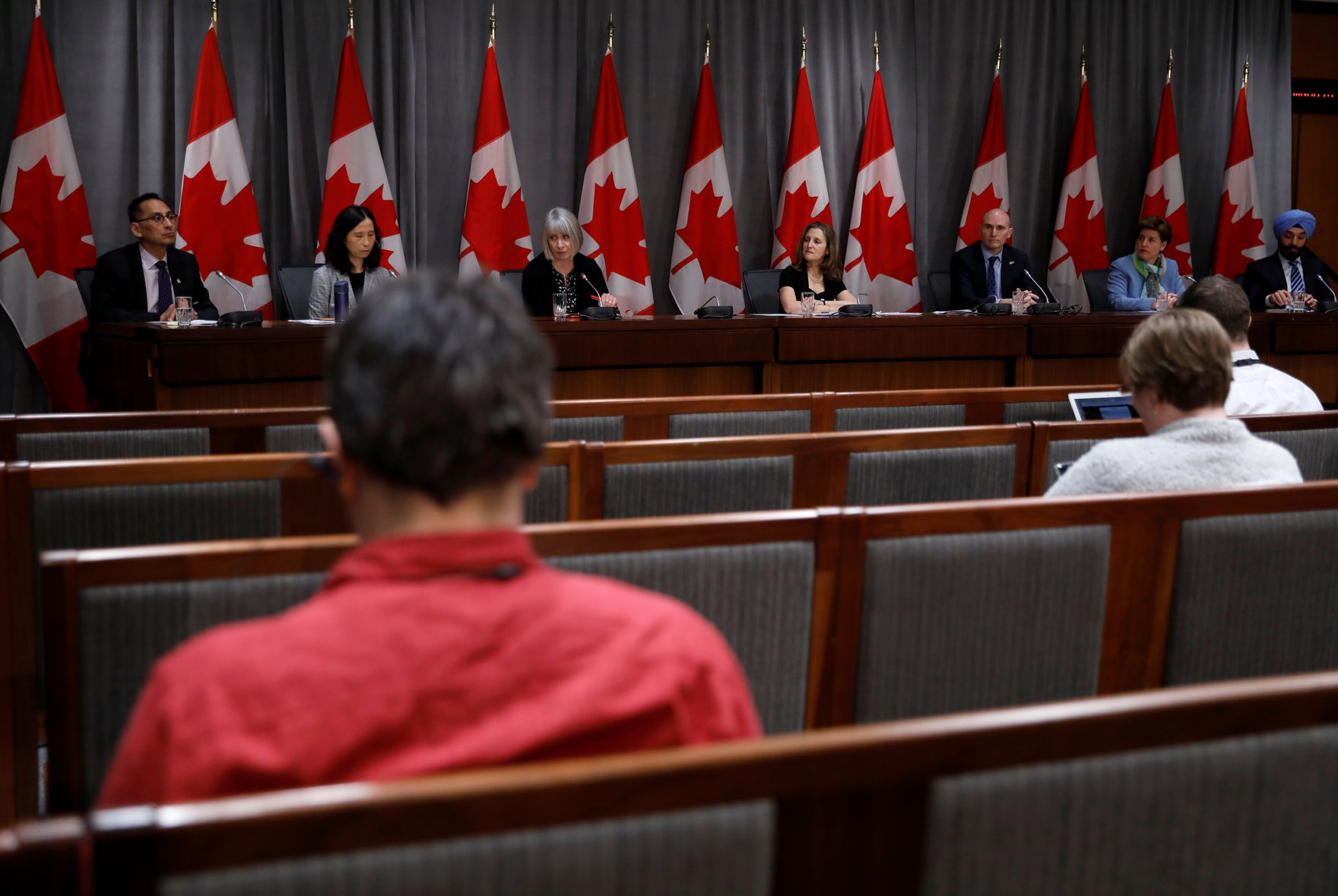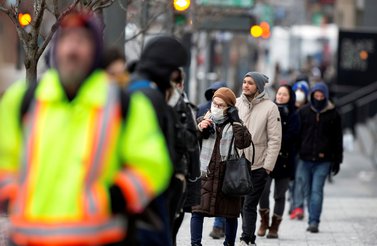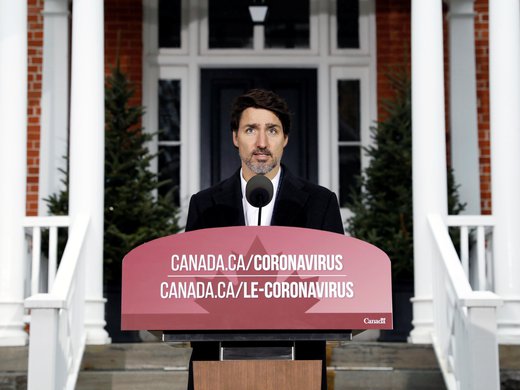Global leaders, from the World Health Organization (WHO) director-general to heads of state, have taken to calling the effort against the COVID-19 threat a “war.” This easy-to-hand metaphor has its psychological uses: it suggests leadership resolve, is a rallying cry for societies, helps instil discipline, and may be a prelude to the imposition of emergency measures and commensurate drawdown of civil liberties. For some it may even be reassuring. Wars, after all, can be won.
Thinking about a war on COVID-19 may be instructive in other ways, especially if it leads us to consider the elements of success needed against a very different kind of enemy. There are two long-standing military precepts that come into play — the idea of knowing your enemy, first conceptualized by a sixth-century BC Chinese general (Sun Tzu) in a text known as The Art of War, and the necessity of equipping your forces well, remembering the maxim that “an army marches on its stomach” (attributed to both Napoleon Bonaparte and Frederick the Great). Translated to modern times and the COVID-19 war, victory might just depend on how well we understand the threat, and how well we provide health-care workers in all sectors with the equipment they need to do their curative work and stay healthy themselves. Success in this war may come down to surveillance and stockpiles.
Canada has long worked to position itself as a global leader in health surveillance, building on the experience of the severe acute respiratory syndrome (SARS) epidemic in 2003. The federal government created the Public Health Agency of Canada (PHAC) in the aftermath of SARS, and moved the existing Centre for Emergency Preparedness and Response inside its walls. Health surveillance initiatives were boosted, including the work of the Global Public Health Intelligence Network (GPHIN), in conjunction with the WHO. The Global Health Security Initiative — an informal network of states including Canada that came together in response to the attacks of September 11, 2001, and fears of chemical, biological, radiological and nuclear (CBRN) threats — was reoriented and meant to be reinvigorated after SARS. Canada offered to host its secretariat. These initiatives are ongoing and were meant to be down payments on a system that would ensure early warning of global pandemic outbreaks through collective surveillance and timely information sharing. They were meant to perform as elements in an unprecedented global health intelligence collection scheme.
But there were always problems with this surveillance concept, which is dependent on assumptions about global cooperation and truthful reporting on epidemic outbreaks at their source. Efforts like the Global Public Health Intelligence Network rely on open-source reporting, and are disconnected from security and intelligence agencies with special access to information and special expertise in threat assessments. They use media scans as a prime source of information, despite the fact that national media environments can be very different and constrained by state control. The question of the resource effort required to make such a network truly work was never properly addressed, especially after hopes emerged that big data analytics might be a powerful tool (and save money by cutting back on the need for human analytic talent).
Despite these limitations, GPHIN and other open-source health surveillance efforts can be an important instrument for listening. But they also have a real tin-ear potential, not least when, as the COVID-19 outbreak demonstrated, the Chinese state clamped down on news reporting that it judged to be politically sensitive. This clampdown created delays and confusion in early warning globally. Media reporting from US intelligence sources indicates that Chinese public data on COVID 19 may continue to be skewed and not fully reliable.
The current global health surveillance system on which Canada (and many other states) rely is inadequate to deal with major pandemics. A more effective system would combine elements of open source reporting and openly shared information, with contributions from more secret sources generated by national intelligence agencies, each a check on the veracity of the other. As is often said in other contexts: “trust but verify.”
Domestic surveillance of infectious diseases has its own limitations. In the Canadian model it is also a responsibility of the PHAC, but operates differently from global health surveillance. In the domestic arena, the federal PHAC does not independently collect health intelligence, but works with the provinces and agencies to receive health information from their jurisdictions and use this information for federal reporting and in meeting reporting obligations (based on the International Health Regulations) to the WHO.
Dependency on reporting from other levels of government within Canada is an analogue to dependency on reporting from other nation-states on the global plane. Studies by the Office of the Auditor General on surveillance of infectious diseases in 2008, and a more targeted 2015 investigation that touched on surveillance of antimicrobial resistance, suggest that the PHAC has struggled to put together a fully capable domestic health surveillance system. Lack of transparency and the absence of any more recent independent reports make any public evaluation of progress difficult.
Domestic surveillance in the current pandemic crisis has been bedevilled by the lack of full-scale testing of the Canadian population, early uncertainty about the extent of community transfer and the phenomenon of asymptomatic carriers, and patchwork protocols adopted by provincial and territorial jurisdictions. As with global surveillance deficiencies, the current crisis has taught us that improvements in domestic surveillance need to be made as a matter of urgency. Without full-scale testing, currently unavailable in Canada due to equipment shortages and lab reporting challenges, domestic surveillance will be severely deficient.
"Without good surveillance capacity, stockpiles cannot be maintained to meet the threat."
PHAC departmental plans indicate that spending on “health security” — which is described as the responsibility to prepare and respond to public health emergencies — has been on a significant decline for a number of years. Over a seven-year period, from 2016–2017 to 2021–2022, the extent of that projected decrease amounted to a staggering 40 percent, which included disbanded programs such as one dealing with Ebola response. The most recent departmental plan for 2020–2021 suggests a further eight percent budget cut to 2022–2023 and a diminution of personnel by six percent. Obviously, this budget projection is no more — but it is an indicator that health security preparedness wasn’t a top fiscal priority for the department prior to COVID-19. Even while planning to spend much less, the public health department’s plan for 2019-–2020 recognized that there were improvements to be made to two key elements of health security delivery: the capacity of health intelligence and the National Emergency Strategic Stockpile (NESS). In a press conference on April 1, the Minister of Public Health, Patty Hadju, admitted that “federal governments for decades have been underfunding things like public health preparedness.” This is an important admission but leaves us to play catch-up.
If our health intelligence strategy, designed to know the enemy, has been overmatched by COVID-19, what about the efforts to equip our troops — the front-line health care workers? Shortages of PPE (personal protective equipment), including gloves, masks and gowns, have been a growing worry as Canada confronts a steeply rising curve of known infections. Equally disturbing is the prospect of shortages of respiratory machines (ventilators) for intensive care units, to deal with the most severe cases. Enter the NESS.
The stockpile has a long history, dating back to the early days of the Cold War when atomic Armageddon loomed but has rarely been in the public eye. Despite significant media attention being paid to troubles with its US counterpart, no similar intense scrutiny of NESS has yet featured in public discourse in Canada. Without consideration of the role that NESS is meant to play in an emergency, we do not have anything like the full picture of our preparedness. We badly need transparency regarding the state of our health emergency stockpile and its capacity to assist in the war on COVID-19.
NESS facilities consist of a central depot in the National Capital region plus a network of warehouses across Canada. How many warehouses exist today is not known (there were 11 in 2011); where they are is a state secret. The NESS inventory is known only in general terms. It holds three categories of emergency supplies:
- medical equipment, including PPE and ventilators;
- pharmaceuticals; and
- social service supplies (beds, towels, blankets, generators).
Equipment from NESS has been rolled out in a variety of previous crises including the H1NI (swine flu) outbreak in 2009, the Alberta floods in 2013, to assist with the Syrian refugee crisis in 2015, in response to the Fort McMurray wildfires in 2016, and to help with a tuberculosis outbreak in a remote community in northern Quebec in 2018. The variety of these deployments is an important clue to both the strengths and the weaknesses of the NESS concept. It is meant to be all-purpose rather than targeted, and its inventory reflects this.
An internal evaluation of the NESS program in 2011 revealed serious concerns about its inventory, and its management. The evaluation also discovered deficiencies in provincial and territorial knowledge about NESS, a critical problem in so far as the protocol requires provinces and territories to first call on assistance from NESS for its supplies to be released. The internal study found an absence of policy for the use of the NESS stockpile to respond to international events. Altogether, the study called for an overhaul of the NESS system and recommended the creation of a strategic plan to guide its asset mix and policy.
Investigation of the NESS inventory, such as it was in 2011, showed that its social services supplies were decades old, having been acquired in the 1950s and 1960s. Its pharmaceutical stores placed a heavy emphasis on CBRN antidotes, reflecting concerns generated by the 9/11 attacks. The situation with medical equipment for pandemic response appeared better, with inventory laid in in the post-SARS period (2004 and later). Still, the evaluation recommended, in classic bureaucratic flannel, that NESS should “focus on an appropriate public health role when determining future strategic mix of assets.”
What changes were made to NESS following the 2011 evaluation is not known. How much usable PPE is in the stockpile is not known. How many ventilators NESS holds and how capable they are currently is not disclosed. The reasons for this all-out secrecy are hard to fathom. The lid has begun to come off the US stockpile, in the midst of growing controversy about shortages of crucial medical supplies. It is time it came off the Canadian stockpile.
NESS is not meant to fill all emergency health need gaps over a sustained time frame. What it is meant to offer is a strategic surge capacity — an ability to ensure that sufficient supplies can be mobilized from its warehouses to sustain front-line health-care workers until new production and new sources of supply can come online. Following a prime ministerial announcement on March 31, all attention (and, it seems, all hopes) are being placed on an emergency mobilization of procurement. Such hopes may be overridden by the realities of cut-throat global competition; supply delays, clogged supply chains and factory retooling difficulties. Recent indications that the US government may limit or deny exports of critical health supplies to Canada add a further worry.
If NESS has failed in its mission, as strongly suggested by the Health Minister’s April 1 statement on stockpiles that, “we likely did not have enough” — then we will have to hope that emergency procurement works. Instead of there being a strategic army in reserve, there may have been only phantom troops.
Surveillance failed; stockpiles failed. These issues are inter-linked. Without good surveillance capacity, stockpiles cannot be maintained to meet the threat. Admittedly, there was never going to be perfect preparedness for this wholly unexpected war. Lessons will have to be learned once the crisis has abated. What must be done now is to strengthen both global and domestic surveillance of COVID 19 in innovative ways. This requires augmenting global open source reporting with information from our own and allied intelligence agencies, and rolling out a proper full- scale testing regime and subsequent contact tracing across Canada, accompanied by full information sharing across jurisdictions. NESS must be rebuilt and reconfigured to give the federal authorities real surge capacity and flexibility. If we can do these things, we will be better prepared to confront the current and anticipated next waves of this devastating pandemic.





